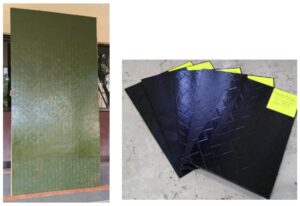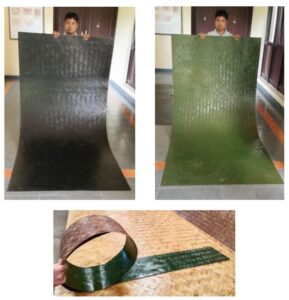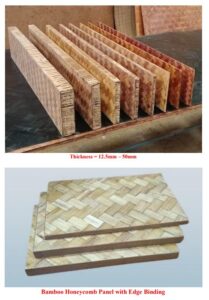1. Introduction
Bamboo poles and scaffolding offer a cost-effective and eco-friendly alternative to traditional construction materials like steel and aluminum. Bamboo is strong, durable, and renewable, making it an ideal choice for scaffolding, construction support, and temporary structures. This report provides an in-depth analysis of setting up a bamboo poles and scaffolding supply business, including investment, production, market potential, and financial feasibility.
2. Objectives
- To establish a business for sourcing, processing, and supplying bamboo poles for scaffolding and construction.
- To promote sustainable construction practices using bamboo.
- To cater to domestic and international markets with high-quality bamboo poles and scaffolding.
- To contribute to reducing the carbon footprint in the construction industry.
3. Market Analysis
3.1 Demand Analysis
- Growing global demand for sustainable construction materials.
- Rising infrastructure development in developing economies.
- Government policies promoting eco-friendly alternatives in construction.
- Increasing use of bamboo scaffolding in construction, bridges, and event structures.
3.2 Target Market
- Construction companies and real estate developers.
- Infrastructure projects (roads, bridges, and temporary structures).
- Exporters targeting regions with high bamboo scaffolding usage (Asia, Africa, South America).
- Wholesale suppliers and retailers in construction materials.
4. Land, Machinery & Costing
4.1 Land & Infrastructure
| Item | Quantity | Cost per unit (INR) | Total Cost (INR) |
|---|---|---|---|
| Land (2 acres) | |||
| Storage & Processing Unit | |||
| Machinery & Equipment | |||
| Office & Utilities | |||
| Total | – | – |
4.2 Raw Materials & Processing Costs
| Item | Quantity | Cost per unit (INR) | Total Cost (INR) |
|---|---|---|---|
| Raw Bamboo | |||
| Treatment Chemicals (Anti-fungal, Fire-resistant) | – | – | |
| Cutting & Processing | – | – | |
| Labor (20 workers) | |||
| Packaging & Transportation | – | – | |
| Miscellaneous | – | – | |
| Total | – | – |
4.3 Processing & Supply Chain
- Sourcing – Procurement of mature bamboo poles from plantations.
- Trimming & Treatment – Cutting to required lengths and treating for durability.
- Quality Testing – Strength and safety checks.
- Storage & Packaging – Organized storage and packaging for shipment.
- Supply & Distribution – Supplying to construction firms and retailers.
5. Financial Analysis
5.1 Cost Estimation
Fixed Costs
| Expense | Cost (INR) |
|---|---|
| Land & Infrastructure | |
| Machinery & Equipment | |
| Office Setup & Utilities | |
| Total Fixed Costs |
Variable Costs (Per Year)
| Expense | Cost (INR) |
|---|---|
| Raw Materials | |
| Processing & Treatment | |
| Labor | |
| Utilities & Maintenance | |
| Marketing & Distribution | |
| Total Variable Costs |
5.2 Revenue & Profit Analysis
| Parameter | Value |
|---|---|
| Selling Price per Bamboo Pole | |
| Sales Volume (Per Year) | |
| Revenue from Sales | |
| Annual Cost (Fixed + Variable) | |
| Profit (From Second Year Onwards) |
6. Break-Even Analysis
- Fixed Costs:
- Profit Per Year (After First Year):
- Break-even Point =
7. Sustainability & Environmental Impact
- Renewable Resource: Bamboo grows rapidly and regenerates quickly.
- Low Carbon Footprint: Less energy-intensive than metal scaffolding.
- Waste Utilization: Bamboo offcuts can be used for furniture or biofuel.
- Eco-Friendly Construction: Encourages sustainable building practices.
8. Challenges & Mitigation Strategies
| Challenge | Mitigation Strategy |
|---|---|
| Bamboo Supply Chain | Establish partnerships with bamboo farmers and plantations. |
| Market Competition | Offer competitive pricing and maintain high-quality standards. |
| Transportation & Logistics | Optimize storage and bulk shipping for cost efficiency. |
| Awareness & Adoption | Conduct awareness campaigns in the construction industry. |





